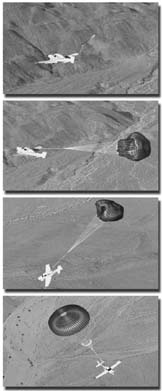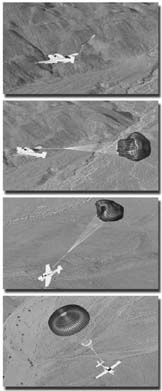
by Ken Ibold
A basic tenet of capitalism – the create a better mousetrap cliche – is put to the test every time a new airplane design comes on the market. Better, of course, is in the eye of the beholder, but it seems that modern aviation has as a primary objective the intent of being safer.
With that in mind, the question then becomes whether modern designs are, in fact, safer. A spate of accidents involving Cirrus Design airplanes call attention to the problem, leading some to question the airplanes design and others to wonder about transition training. Analysis of the safety record of the two Cirrus models, as well as competitive designs new and old, leads to some interesting conclusions about what constitutes a safe airplane design.
When Cirrus splashed onto the aviation scene with its SR20, safety was a key buzzword. Early in his flying career, Cirrus co-founder Alan Klapmeier had survived a mid-air collision that killed the other pilot. Safety became a key goal when he launched the airplane company. The design featured crashworthy seating and a composite fuselage designed to prevent impaling passengers whenever possible. But the big news was that parachute.
Four and a half years after the introduction of the SR20, the airplane and its companion SR22 have racked up 14 accidents involving U.S.-registered airplanes, seven of them fatal, excluding a crash during pre-production flight testing that killed the test pilot. Shocking numbers for a company that has fielded a fleet of 1,100 airplanes? The best we can come up with is a definite maybe.
Competing modern designs include airplanes from Diamond Aircraft and Lancair. There has yet to be an accident involving a U.S.-registered Diamond DA40 or a Lancair Columbia, which on the face of it appears damning to Cirrus. A look behind the numbers, however, leads to a complicated dynamic at work.
First, about that parachute. The first attempt by a pilot to deploy it during a time of need failed. The chute recorded its first – and so far only – save in October 2002.
However, a review of Cirrus accidents show the parachute would not likely have been a factor in any of the fatal accidents Cirrus airplanes have suffered. Based on preliminary report information for the most part, the fatal accidents boil down to the usual suspects – descending too low on approach, buzzing/scud running, controlled flight into terrain and VFR into IMC.
These are the kinds of accidents the NTSB typically pins squarely on the shoulders of the pilot. However, in the case of Cirrus the question must be raised whether the airplane has some design quirk, handling issue or training concern that is unique.
The Competition
Competitive models include the Diamond DA40, Lancair Columbia and Cessna 182S and 182T models. In the case of the Cessnas, we consider only recent and current production models because new aircraft buyers tend to fixate on buying new rather than late model. Based on price point, mission and performance, we consider the 182 to be the most comparable of the old school design and has a proven record over time.
There are 145 U.S.-registered DA40s and 196 DA20-C1s. Although the two-seat DA20 is marketed primarily as a trainer, there are enough in private hands to warrant at least a look at its safety record as well, even if firm conclusions might be a bit suspect. There are 68 Lancair LC-40s registered in the U.S.
As the chart on page 6 details, the accident rates among the competitors vary substantially, with the Cirrus SR20 sticking out as an example, perhaps, of how not to do it. But the issue is clouded by a couple of factors.
The first is the hard lessons Cirrus learned as a company when it began delivering certified airplanes in 1999.
Theres no doubt that the first couple of years the attitude we took was that we assumed that the people coming here were current, competent pilots and our job was to make them current, competent pilots in Cirrus airplanes, says Ian Bentley, who handles initial customer training for Cirrus.
However, Cirrus soon realized that there were some pitfalls. First, most pilots had no experience with the Garmin 430 and suffered from the distraction of learning it and the loss of utility that comes with not understanding its capabilities. Second, the airplanes speed and range, combined with its appeal among less-experienced pilots, put pilots into situations for which they were not prepared.
Transition Training
In an effort to address the safety question, Cirrus has always taken a lead in transition training. Initially handled by Wings Aloft, Cirrus soon brought the training in-house briefly while looking for another contractor. They found it at the University of North Dakota, where the UND Aerospace Foundation took over transition training in mid-2002.
UND approached the project like a type rating. In addition, the program integrated FITS (FAA/Industry Training Standards) protocols that encourage not only maneuver training, but also scenario-based training.
As part of the training, Cirrus buyers make actual and virtual flights in which the instructor posed situations that may arise, then asks the pilot to solve the problem. The pilots are exposed to analyses of why other Cirrus airplanes have crashed.
At the end of the training, pilots are expected to fly to the Practical Test Standards for the certificate they hold. It does not include instrument proficiency to the level of the instrument rating unless the pilot specifically orders that up, but it does include basic information about how to use the installed avionics to shoot approaches.
Nevertheless, about 90 percent of Cirrus buyers leave the training program are not proficient enough with the avionics to go out and launch into hard IFR conditions, says John Walberg, Cirrus Flight Training manager for the UND Aerospace Foundation.
The situation has improved somewhat, as the pilots attracted to Cirrus airplanes gain exposure to avionics such as the Garmin 430 and 530 series GPS/nav/comms. Most new buyers have more than passing familiarity with the operation, whereas even a year ago many were not proficient, Walberg says. Complicating the transition factor now is the recent introduction of electronic primary flight displays, which take about 10 hours to fully absorb.
The UND training program has, by our measure, been effective. Only one graduate of UNDs transition course has suffered an accident – that one a VFR-into-IMC accident in which the pilot departed VFR under 300-foot ceilings in the dark, planning to fly underneath to better weather beyond.
Interestingly, Cirrus competitors have not suffered the same fate, perhaps in part because of the trail early Cirrus buyers blazed.
At Diamond Aircraft, for example, no DA40s have suffered misfortune that meets the NTSB definition of an accident, despite the lack of a formal training program beyond a typical acceptance flight.
DA40 buyers exhibit fairly good overall skill level, says John Gauch, Diamonds vice president of sales and marketing, but their proficiency on instruments is a bit lacking. In addition, although many know how to operate a Garmin GPS/nav/comm, most have not flown a GPS instrument approach in actual conditions, if at all.
With Diamonds impending introduction of the Garmin G1000 integrated avionics sytem, however, Diamond plans to create a training program that meets FITS criteria. Gauch says the G1000 will constitute the biggest transition problem, while now the primary concern most buyers have is moving from a yoke to a stick.
Cessna has its well-regarded Cessna Pilot Center training program, and virtually everyone who buys a new Cessna buys from a dealer and gets checked out through a CPC.
Looking solely at the new production 182s, one thing is clear: the accident profiles are very similar to those involving Cirrus. VFR into IMC, IFR descents below minimums, controlled flight into terrain.
Although buyers of new 182s are far more likely to have substantial time in 182s than Cirrus buyers are to have in a Cirrus, there is little evidence that is affecting the accident rate of the SR22.
From Here to Eternity
The whole notion of factory-sponsored transition training is laudable, and perhaps its manageable in an environment in which the factory is selling most of the airplanes. One concern that immediately comes to mind, then, is whether Cirrus accidents will take another rise when these airplanes start getting into the hands of second, third and fourth owners.
Frankly, we dont think that will happen for several reasons. First is that the avionics that were sophisticated at the time the airplanes were built will, as the years pass, become more commonplace – if they havent already. Second, we dont see the insurance underwriters putting up with that, since theyre the ones that will have to pay the bill.
In the near term, we expect the Cirrus – particularly the SR22 – to migrate into the same kind of animal as the Piper Malibu. Approved initial and recurrent training will become a condition of insurance coverage. Should future experience find that the accident rate stabilizes on par with, say, a Bonanza, we expect those requirements may loosen a bit.
We havent seen anything in the accident record or in the airplane itself as a smoking gun that reflects some kind of fundamental design flaw or shortcoming that explains the SR20s early penchant for gloomy results.
For Cirrus pilots who were early adopters, one solution might be to take the new checkout course created by UND. Other operators, such as the Air Shares Elite fractional program, have adopted the same program.
Our view is that, if anything, the SR20 got hit because it was an exciting new design that seemed to draw the attention of people with limited experience. Thats not the fault of the designer, but its a problem they latched on to. The result is a training approach that might just serve everyone, Cirrus pilot or not.
Also With This Article
“Safety in Numbers”
“First Flight”




